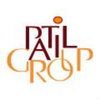
i
Xalta Technology
Services
Filter interviews by
Xalta Technology Services Interview Questions and Answers
22 Interview questions
RPA stands for Robotic Process Automation, which involves using software robots to automate repetitive tasks.
RPA can be used to automate tasks such as data entry, invoice processing, customer service inquiries, and more.
RPA can help improve efficiency, accuracy, and productivity in various industries such as finance, healthcare, and manufacturing.
Examples of RPA tools include UiPath, Blue Prism, and Automation Any...
Tuple is immutable and fixed in size, while list is mutable and can be resized.
Tuple is defined using parentheses, while list is defined using square brackets.
Tuple elements can be of different data types, while list elements can be of the same or different data types.
Tuple is faster than list for iteration and accessing elements.
Example: tuple = (1, 'a', True), list = [1, 'a', True]
Inner join will have more number of rows compared to outer join.
Inner join returns only the matching rows between two tables
Outer join returns all rows from one table and matching rows from the other table
Example: If Table A has 10 rows and Table B has 8 rows, inner join will have maximum 8 rows while outer join can have maximum 10 rows
Different types of joins include inner join, outer join, left join, and right join.
Inner join: Returns rows when there is a match in both tables.
Outer join: Returns all rows when there is a match in one of the tables.
Left join: Returns all rows from the left table and the matched rows from the right table.
Right join: Returns all rows from the right table and the matched rows from the left table.
I am comfortable with Python as a programming language.
Python is known for its simplicity and readability, making it a popular choice for developers.
It has a large standard library and community support, making it easy to find resources and solutions.
Python is versatile and can be used for web development, data analysis, automation, and more.
Interpreted languages are used for their flexibility, ease of debugging, and platform independence.
Interpreted languages are easier to read and write compared to compiled languages.
They allow for dynamic typing, making it easier to work with different data types.
Interpreted languages are platform independent, meaning the code can run on any system with the interpreter installed.
Debugging is easier in interpreted l...
Binary Tree is a hierarchical data structure where each node has at most two children. Binary Search Tree is a type of binary tree where the left child is less than the parent and the right child is greater.
Binary Tree can have any values in any order, while Binary Search Tree follows a specific ordering based on the values.
In Binary Search Tree, searching for a value is more efficient as it follows a specific ord...
Classes in programming provide a way to organize and structure code by grouping related data and functions together.
Classes help in organizing code by grouping related data and functions together
Encapsulation allows for data hiding and protection
Inheritance enables code reusability and promotes the DRY (Don't Repeat Yourself) principle
Polymorphism allows for flexibility and extensibility in code design
Product life cycle refers to stages a product goes through from introduction to withdrawal, while software life cycle refers to stages a software goes through from development to retirement.
Product life cycle includes introduction, growth, maturity, and decline stages.
Software life cycle includes planning, development, testing, deployment, and maintenance stages.
Product life cycle focuses on physical products, whi...
Some searching algorithms include linear search, binary search, depth-first search, and breadth-first search.
Linear search: Iterates through each element in a list until the desired element is found.
Binary search: Divides a sorted array in half to determine if the target value is in the lower or upper half.
Depth-first search: Explores as far as possible along each branch before backtracking.
Breadth-first search: E...
Xalta Technology Services Interview Experiences
6 interviews found
I appeared for an interview in Dec 2024, where I was asked the following questions.
- Q1. In detail overview on final year project
- Q2. Basic dsa, cns, dbms
I applied via Internshala and was interviewed in May 2023. There were 3 interview rounds.

(15 Questions)
- Q1. What is procedural language and object oriented language? Which one is better? What are the examples of both?
- Ans.
Procedural language focuses on procedures and functions, while object-oriented language focuses on objects and classes.
Procedural language: C, Pascal, BASIC
Object-oriented language: Java, C++, Python
Procedural languages are better for small projects, while object-oriented languages are better for large and complex projects
- Q2. What is encapsulation and polymorphism?
- Ans.
Encapsulation is the concept of bundling data and methods that operate on the data into a single unit. Polymorphism allows objects to be treated as instances of their parent class.
Encapsulation helps in hiding the internal state of an object and restricting access to it.
Polymorphism allows objects of different classes to be treated as objects of a common superclass.
Encapsulation ensures data integrity and prevents unau...
- Q3. What is fundamental data types and derived data types? What is the difference?
- Ans.
Fundamental data types are basic data types provided by a programming language, while derived data types are created by combining fundamental data types.
Fundamental data types include integers, floating-point numbers, characters, and booleans.
Derived data types are created by combining fundamental data types, such as arrays, structures, and classes.
The main difference is that fundamental data types are predefined by th...
- Q4. What is linear data types and non linear data types?
- Ans.
Linear data types have elements arranged in a sequential order, while non-linear data types do not have elements arranged in a sequential order.
Linear data types include arrays, linked lists, and queues.
Non-linear data types include trees and graphs.
Linear data types have a single path to traverse all elements, while non-linear data types have multiple paths.
- Q5. Difference between Binary Tree and Binary Search Tree?
- Ans.
Binary Tree is a hierarchical data structure where each node has at most two children. Binary Search Tree is a type of binary tree where the left child is less than the parent and the right child is greater.
Binary Tree can have any values in any order, while Binary Search Tree follows a specific ordering based on the values.
In Binary Search Tree, searching for a value is more efficient as it follows a specific order.
Ex...
- Q6. Do you know any algorithms?
- Ans.
Yes, I am familiar with various algorithms commonly used in RPA development.
I am familiar with sorting algorithms like bubble sort, quick sort, and merge sort.
I have experience with searching algorithms such as linear search and binary search.
I am knowledgeable about graph algorithms like Dijkstra's algorithm and breadth-first search.
- Q7. Name some sorting algorithms?
- Ans.
Some sorting algorithms include Bubble Sort, Selection Sort, Insertion Sort, Merge Sort, Quick Sort, and Heap Sort.
Bubble Sort - repeatedly steps through the list, compares adjacent elements, and swaps them if they are in the wrong order
Selection Sort - repeatedly finds the minimum element from the unsorted part and swaps it with the first unsorted element
Insertion Sort - builds the final sorted array one item at a tim...
- Q8. Name some searching algorithms?
- Ans.
Some searching algorithms include linear search, binary search, depth-first search, and breadth-first search.
Linear search: Iterates through each element in a list until the desired element is found.
Binary search: Divides a sorted array in half to determine if the target value is in the lower or upper half.
Depth-first search: Explores as far as possible along each branch before backtracking.
Breadth-first search: Explor...
- Q9. What is recursion? Where we can use it? Why do you think we can use recursion there?
- Ans.
Recursion is a programming technique where a function calls itself to solve a problem.
Recursion is used in scenarios where a problem can be broken down into smaller subproblems of the same type.
Examples include factorial calculation, Fibonacci sequence generation, and tree traversal.
Recursion is useful when the problem can be solved by solving a smaller version of the same problem.
- Q10. Why you want to become RPA developer?
- Q11. What is RPA? Do you have seen what kind of problems that RPA solve or what it does, its uses?
- Ans.
RPA stands for Robotic Process Automation, which is the use of software robots to automate repetitive tasks.
RPA can automate tasks such as data entry, data extraction, form filling, and report generation.
It can improve efficiency by reducing human errors and speeding up processes.
RPA is used in various industries like finance, healthcare, and manufacturing.
Examples of RPA tools include UiPath, Blue Prism, and Automatio...
- Q12. What are different Software Development Life Cycle? What are the steps in it?
- Ans.
Software Development Life Cycle (SDLC) is a process used by software development teams to design, develop, and test high-quality software.
Waterfall Model: Sequential approach with distinct phases like requirements, design, implementation, testing, and maintenance.
Agile Model: Iterative approach with continuous feedback and collaboration between cross-functional teams.
Spiral Model: Combination of iterative and waterfall...
- Q13. What is difference between product life cycle and software life cycle?
- Ans.
Product life cycle refers to stages a product goes through from introduction to withdrawal, while software life cycle refers to stages a software goes through from development to retirement.
Product life cycle includes introduction, growth, maturity, and decline stages.
Software life cycle includes planning, development, testing, deployment, and maintenance stages.
Product life cycle focuses on physical products, while so...
- Q14. What are the benefits of class?
- Ans.
Classes in programming provide a way to organize and structure code by grouping related data and functions together.
Classes help in organizing code by grouping related data and functions together
Encapsulation allows for data hiding and protection
Inheritance enables code reusability and promotes the DRY (Don't Repeat Yourself) principle
Polymorphism allows for flexibility and extensibility in code design
- Q15. What is the Version Controlling? What is the use of it?
- Ans.
Version controlling is a system that records changes to a file or set of files over time so that you can recall specific versions later.
Version controlling helps in tracking changes made to code or files over time.
It allows multiple developers to work on the same project without interfering with each other's work.
It helps in reverting back to previous versions of code in case of errors or bugs.
Popular version controlli...
(7 Questions)
- Q1. Which language you are comfortable with? (Here I said Python)
- Ans.
I am comfortable with Python as a programming language.
Python is known for its simplicity and readability, making it a popular choice for developers.
It has a large standard library and community support, making it easy to find resources and solutions.
Python is versatile and can be used for web development, data analysis, automation, and more.
- Q2. What is interpreted language and compile language? What is difference between interpreted language and compile language? Give examples of both.
- Ans.
Interpreted languages are executed line by line while compiled languages are translated into machine code before execution.
Interpreted languages are executed line by line, translating and executing code simultaneously
Compiled languages are translated into machine code before execution, resulting in faster performance
Examples of interpreted languages: Python, JavaScript, Ruby
Examples of compiled languages: C, C++, Java
- Q3. Why we use interpreted languages?
- Ans.
Interpreted languages are used for their flexibility, ease of debugging, and platform independence.
Interpreted languages are easier to read and write compared to compiled languages.
They allow for dynamic typing, making it easier to work with different data types.
Interpreted languages are platform independent, meaning the code can run on any system with the interpreter installed.
Debugging is easier in interpreted langua...
- Q4. Difference between tuple and list?
- Ans.
Tuple is immutable and fixed in size, while list is mutable and can be resized.
Tuple is defined using parentheses, while list is defined using square brackets.
Tuple elements can be of different data types, while list elements can be of the same or different data types.
Tuple is faster than list for iteration and accessing elements.
Example: tuple = (1, 'a', True), list = [1, 'a', True]
- Q5. What are different types of joins?
- Ans.
Different types of joins include inner join, outer join, left join, and right join.
Inner join: Returns rows when there is a match in both tables.
Outer join: Returns all rows when there is a match in one of the tables.
Left join: Returns all rows from the left table and the matched rows from the right table.
Right join: Returns all rows from the right table and the matched rows from the left table.
- Q6. Which join will have more number of rows?
- Ans.
Inner join will have more number of rows compared to outer join.
Inner join returns only the matching rows between two tables
Outer join returns all rows from one table and matching rows from the other table
Example: If Table A has 10 rows and Table B has 8 rows, inner join will have maximum 8 rows while outer join can have maximum 10 rows
- Q7. Coding Question: Given list of array, one number is missing and instead of that one number is duplicated. Find the missing number and the number which is duplicated? (Only 1 Coding Question was asked)
- Ans.
Find the missing and duplicated numbers in an array of strings.
Convert the array of strings to integers for easier manipulation.
Calculate the sum of all numbers in the array and compare it to the sum of numbers from 1 to n, where n is the length of the array.
The difference between the two sums will give you the missing number.
To find the duplicated number, keep track of the frequency of each number in a hashmap.
Interview Preparation Tips
- Basic concepts of programming
- Oops pillar
- SDLC
- PDLC
- SQL joins
- BST vs BT
- Algorithms
- Recursion
Interviewers are really very good and understanding people, they will give you time, hint and also will encourage you to think of a possible answer. If you don't know any answer say "Sorry sir/madam, I don't know about it!". You can give them answers in your own way, no need to be exact if you don't know proper definition, just say what you know, as they only want to check that you know the concept. Pro tip: Always say Python is the language you are comfortable in, questions on python are really very easy and it is very easy to solve coding problem in python as well. Prepare the questions which I have given, they are very basic and will be asked, they are more than enough.
Skills evaluated in this interview
I applied via Referral and was interviewed before Jun 2023. There were 2 interview rounds.
(2 Questions)
- Q1. What is RPA and its applications?
- Ans.
RPA stands for Robotic Process Automation, which involves using software robots to automate repetitive tasks.
RPA can be used to automate tasks such as data entry, invoice processing, customer service inquiries, and more.
RPA can help improve efficiency, accuracy, and productivity in various industries such as finance, healthcare, and manufacturing.
Examples of RPA tools include UiPath, Blue Prism, and Automation Anywhere...
- Q2. My previous organization projects and challenges
(2 Questions)
- Q1. How comfortable I am to switch to a new technology and tool?
- Q2. How will I manage team members and be a team player?
- Ans.
I will manage team members by setting clear goals, providing support, fostering collaboration, and leading by example.
Set clear goals and expectations for team members
Provide support and resources to help team members succeed
Foster collaboration and open communication within the team
Lead by example and demonstrate strong work ethic and professionalism
Interview Preparation Tips
- RPA
- AA360
- UiPath
Skills evaluated in this interview
Operations Manager Interview Questions & Answers
posted on 17 Jun 2025
I appeared for an interview before Jun 2024, where I was asked the following questions.
- Q1. Why do you want to work with our company?
- Ans.
I admire your company's commitment to innovation and excellence in operations, aligning with my professional values and goals.
Your company has a strong reputation for operational efficiency, which I find inspiring and aligns with my experience in streamlining processes.
I am impressed by your commitment to sustainability and corporate social responsibility, which resonates with my personal values.
The opportunity to work...
- Q2. More details about your experience
Interview Preparation Tips
I appeared for an interview before Jun 2024, where I was asked the following questions.
- Q1. What are APIs, and have you worked with them practically?
- Ans.
APIs are interfaces that allow different software applications to communicate and share data seamlessly.
APIs (Application Programming Interfaces) enable integration between different systems.
They can be RESTful or SOAP-based, with REST being more common in web applications.
For example, using a payment gateway API like Stripe allows e-commerce sites to process payments.
APIs can return data in formats like JSON or XML, m...
- Q2. Explain you final year project ?
- Ans.
Developed an automated invoice processing system using RPA to enhance efficiency and reduce manual errors in financial operations.
Utilized UiPath for automation, streamlining the invoice approval process.
Integrated OCR technology to extract data from scanned invoices.
Implemented exception handling to manage discrepancies in invoice data.
Conducted user acceptance testing to ensure the system met business requirements.
Ac...
I appeared for an interview before Jun 2024, where I was asked the following questions.
- Q1. Why do you want to associate with Xalta?
- Ans.
I am drawn to Xalta for its innovative approach, commitment to excellence, and the opportunity to make a meaningful impact in operations.
Xalta's reputation for innovation aligns with my passion for driving operational efficiency.
The company's commitment to sustainability resonates with my values; I admire initiatives like reducing waste in production.
I am excited about the opportunity to lead diverse teams and foster a...
- Q2. What drives you in your career?
- Ans.
I am driven by a passion for operational excellence, continuous improvement, and the impact I can make on team success and organizational growth.
I thrive on challenges, like when I streamlined a supply chain process, reducing costs by 20%.
Mentoring my team members motivates me; seeing them grow and succeed is incredibly rewarding.
I am passionate about data-driven decision-making, which I applied to improve our project ...
Top trending discussions






Interview questions from similar companies

Senior Associate Interview Questions & Answers
Contizant Technologiesposted on 28 Oct 2022
I applied via Recruitment Consulltant and was interviewed before Oct 2021. There were 3 interview rounds.

(3 Questions)
- Q1. Normal introduction was asked
- Q2. Description of the previous role
- Q3. Roles and responsibilities
Not applicable , this was final round
Interview Preparation Tips

I appeared for an interview in Feb 2025, where I was asked the following questions.
- Q1. What your exp?
- Ans.
I have over 5 years of experience in software development, specializing in web applications and cloud technologies.
Developed a full-stack web application using React and Node.js, improving user engagement by 30%.
Led a team of 4 developers in creating a microservices architecture for a scalable e-commerce platform.
Implemented CI/CD pipelines using Jenkins and Docker, reducing deployment time by 50%.
Worked with Agile met...
- Q2. What is you total exp?

I appeared for an interview in Oct 2024, where I was asked the following questions.
- Q1. Given a, b and target x, y , find if we can reach to x,y using a+b or a-b from a,b
- Q2. This was a sliding window problem where need to get the max , so you are give a pos in the x axis and there are items kept and you need to collect the max .
- Ans.
Maximize item collection using a sliding window approach on a 1D axis.
Identify the range of positions on the x-axis where items are located.
Use two pointers to represent the current window of positions being considered.
Expand the right pointer to include more items until the window exceeds the desired range.
Contract the left pointer to reduce the window size while maintaining the maximum sum of items.
Keep track of the ...

I applied via Referral and was interviewed in Feb 2020. There were 6 interview rounds.
Interview Questionnaire
1 Question
- Q1. I am not allowed to reveal
Interview Preparation Tips
Some tips for software engineer interview
1. Please prepare to do competitive programming like use leetcode algoexpert hacker rank
2. Some of the important areas are string problems dynamic programming stack based and tree based
3. There can be design round and interesting questions may be encountered
Xalta Technology Services Interview FAQs
Some of the top questions asked at the Xalta Technology Services interview -
The duration of Xalta Technology Services interview process can vary, but typically it takes about less than 2 weeks to complete.
Tell us how to improve this page.
Xalta Technology Services Interviews By Designations
- Xalta Technology Services RPA Developer Interview Questions
- Xalta Technology Services Robotic Process Automation Developer Interview Questions
- Xalta Technology Services Senior Software Engineer Interview Questions
- Xalta Technology Services Head Operations Interview Questions
- Xalta Technology Services Operations Manager Interview Questions
Interview Questions for Popular Designations
- Team Lead Interview Questions
- Analyst Interview Questions
- Software Developer Interview Questions
- Business Analyst Interview Questions
- Senior Associate Interview Questions
- Senior Engineer Interview Questions
- Associate Software Engineer Interview Questions
- Senior Software Engineer Interview Questions
- Show more
Overall Interview Experience Rating
based on 7 interview experiences
Difficulty level
Duration
Interview Questions from Similar Companies
Xalta Technology Services Reviews and Ratings
based on 11 reviews
Rating in categories
|
Automation Developer
3
salaries
| ₹4.5 L/yr - ₹5.8 L/yr |

Primus Global Technologies

GAMMON INDIA

Magneti Marelli Motherson Auto System

TriGeo Technologies
- Home >
- Interviews >
- Xalta Technology Services Interview Questions











